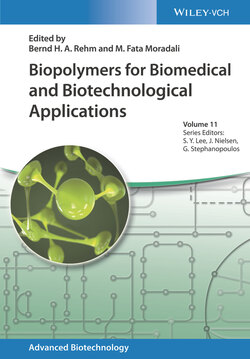Читать книгу Biopolymers for Biomedical and Biotechnological Applications - Группа авторов - Страница 12
1.3 Using a Risk‐Based Approach to Biocompatibility
ОглавлениеAfter the specific biological risks for a particular implementation of a device are identified, the strategy for how the biological safety will be proven must be decided. In the past, the expectation was that because devices are typically made by competitors in unique environments, and with proprietary processing, categorically calling a material “biocompatible” was not possible, and testing should be executed anew for each device coming to market. The list of biological risks was pretty much a shopping list, more or less blindly ordered and executed. Since that time, there has been a dramatic shift toward a more thoughtful scientific approach to the evaluation of biocompatibility.
The shift from check‐listing tests to a risk‐based approach has been motivated by several factors:
Consideration of animal welfare, with a charge to reduce animal testing as much as possible
A broader and better consolidated body of data on materials and toxicology
Better analytical chemistry tools to evaluate manufacturing residuals, material leachables, and degradation products
Knowing that the key is to protect patient safety by proving biocompatibility of a device to the skeptical reviewer while at the same time avoiding as much unnecessary testing as possible is the heart of evaluating biocompatibility using a risk‐based approach. There is an art to a biocompatibility evaluation, balancing commonsense measures to ensure safety with currently available data on one hand and the expectations of regulatory bodies across the spectrum on the other. Understanding the role the material information has and how this broadly impacts the testing strategy (along with the cost and time burden of testing) is central to the strategy.
In the best case, material information and written assessment alone can be sufficient to mitigate and address all of the biological risks associated with a device. To be convincing, however, a great deal of detail is needed. Often, the question of biocompatibility is not about the bulk material itself at all, but rather about the processing of that material that takes place both upstream and downstream. Consider a polycaprolactone (PCL) implant, manufactured using 3D printing from a powder starting material. To the manufacturer, the name PCL along with its assigned chemical abstracts service (CAS) number defines the material. But there are many ways to synthesize PCL [4] that may influence its safety profile in terms of impurities that (while not obvious from bulk properties) will affect toxicology. Consider the PCL pipeline upstream from the device manufacturer:
1 Preparation of the monomer (either ε‐caprolactone or 6‐hydroxycaproic acid) at raw chemical supplier:ε‐Caprolactone and 6‐hydroxycaproic acid may be produced naturally by oxidation of cyclohexanol by microorganisms and then harvested and purified (all steps removing or introducing impurities to varying degrees).ε‐Caprolactone can also be produced industrially through a reaction of cyclohexanone with peracetic acid.
2 The monomer is purified, packaged, sold, and shipped to the maker of the polymer without knowledge that the monomer will end up in a medical device:Purity and performance metrics are based on bulk properties (not toxicological endpoints).
3 The monomer is polymerized by another manufacturer:Polymerization occurs using a variety of different possible techniques, using different activators and/or catalysts, several of which are complex organometallic complexes of questionable safety (see, for example, those contained in Ref. [4]).
4 The polymer is powdered and purified by the manufacturer using a proprietary cryogenic process.
Most (or all) of the details of the upstream process are unknown to the medical device manufacturer, yet they can impact device safety. It could matter, from a toxicological perspective, if the PCL in a device is manufactured using lithium diisopropylamide or tert‐butoxy potassium as a catalyst. If the device manufacturer were to ask their polymer supplier what catalyst or what monomer is used and the method of manufacture, the information is likely considered intellectual property, and medical device manufacturers are typically not big enough customers of polymer manufacturers to be able to make demands. Therefore, in these cases, it is up to the device manufacturer to prove the biocompatibility of their materials acknowledging that very little is known about the impurity profile of their device.
Knowing what you do not know and how that gap in knowledge might be interpreted by a regulator or a patient receiving the device is key in developing a testing strategy for biocompatibility (Figure 1.2). Regulators have been witness to all sorts of mischief on the part of manufacturers, and patients have been injured by devices made from misunderstood materials, elevating further the concern for each device that is in the process of clearance for market. For biopolymer devices, it is typically not known what trace chemicals may be in the material. Another gap in knowledge is often how different processing steps influence the degradation rate of resorbable biopolymers. To answer those questions, we turn to chemistry.
Figure 1.2 Thought process for using ISO 10993‐1 for biological evaluation of medical devices.
